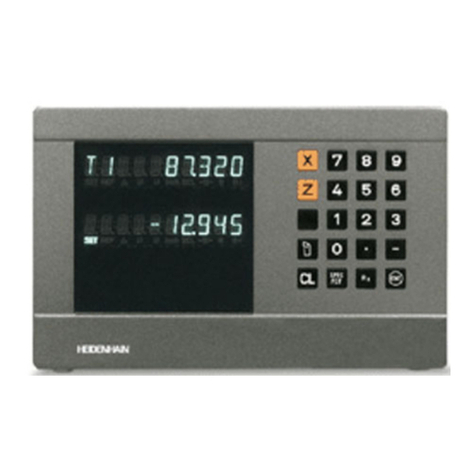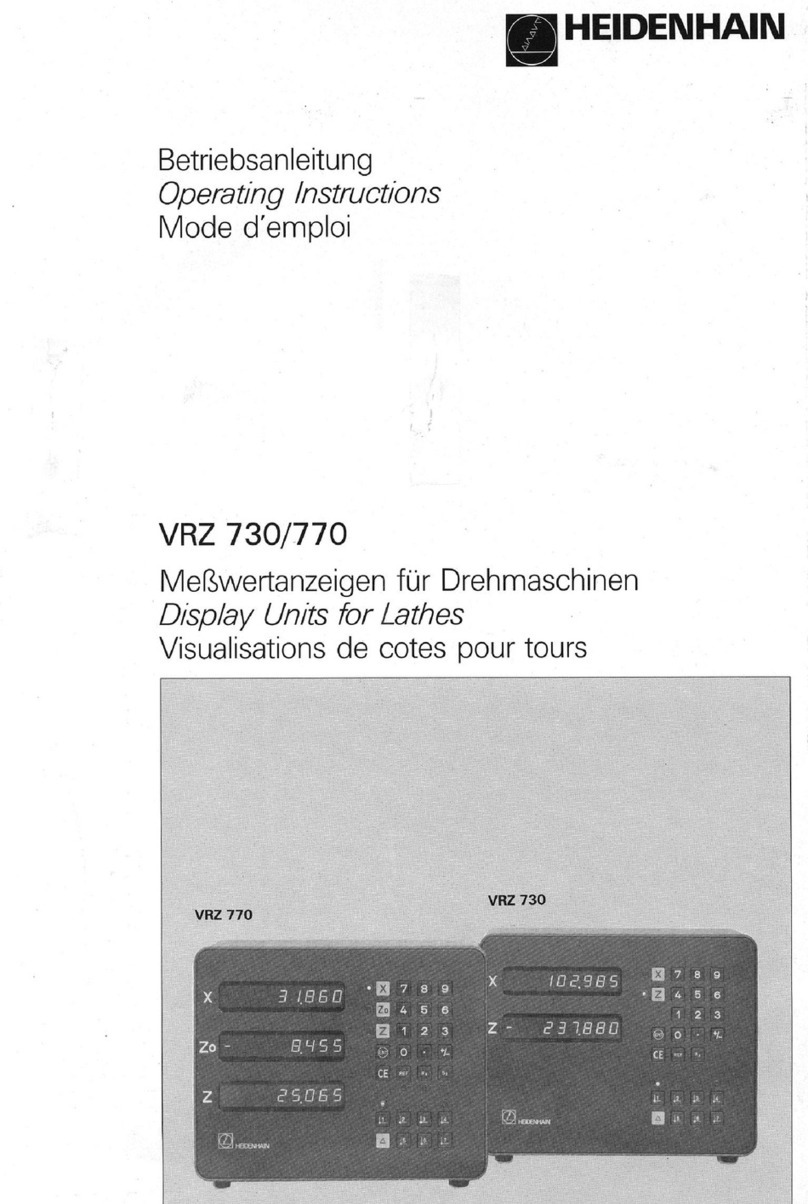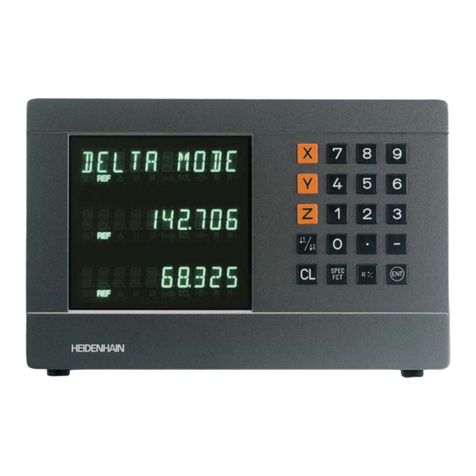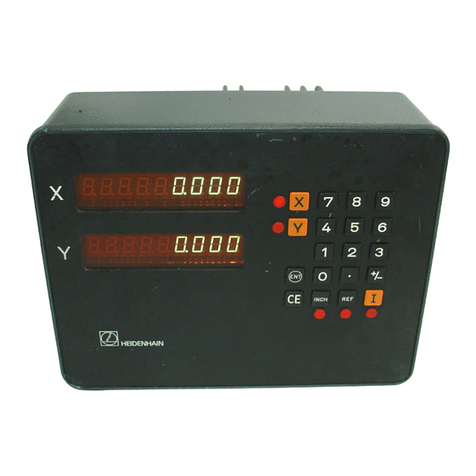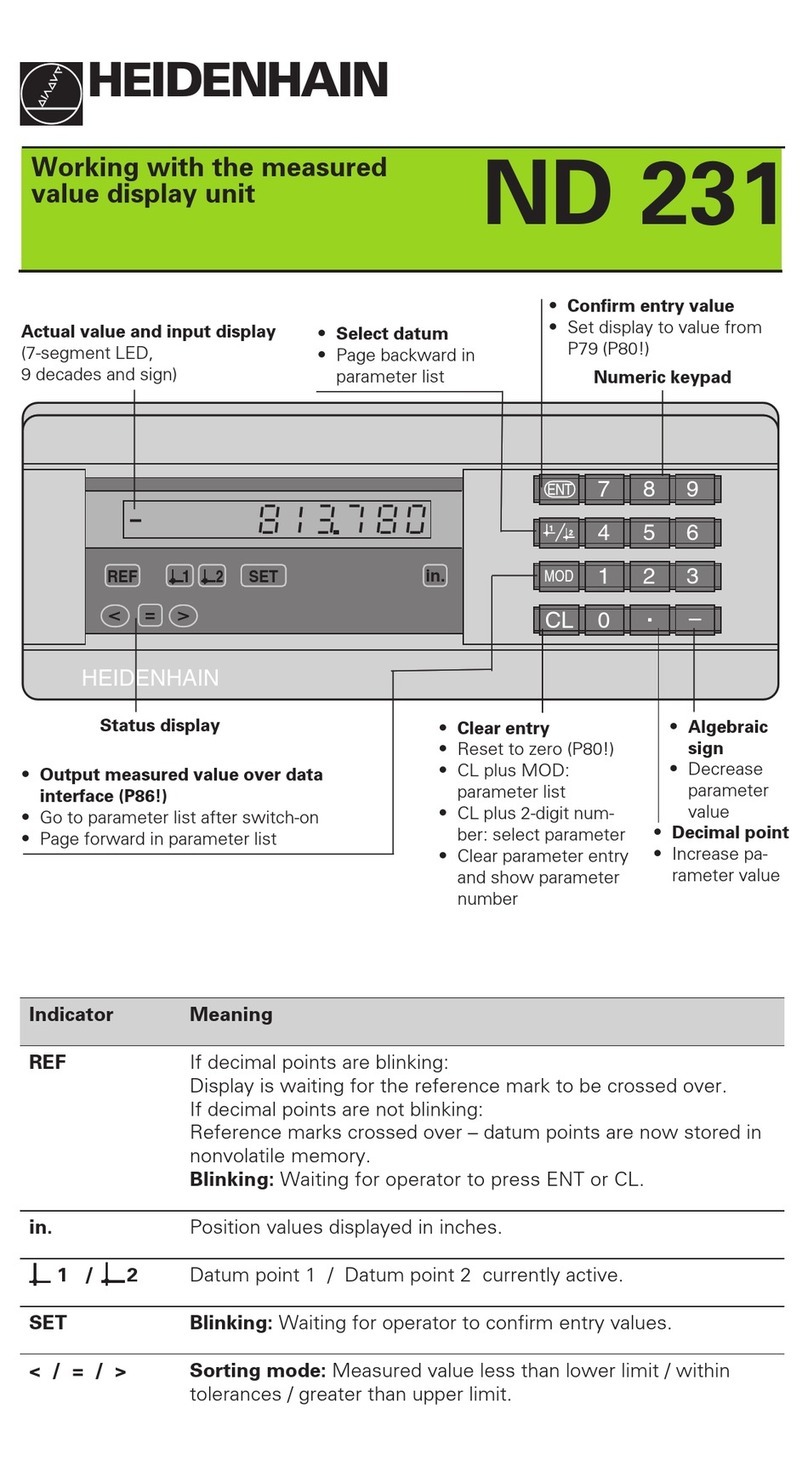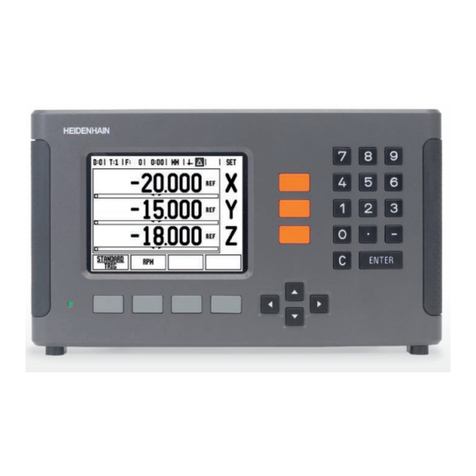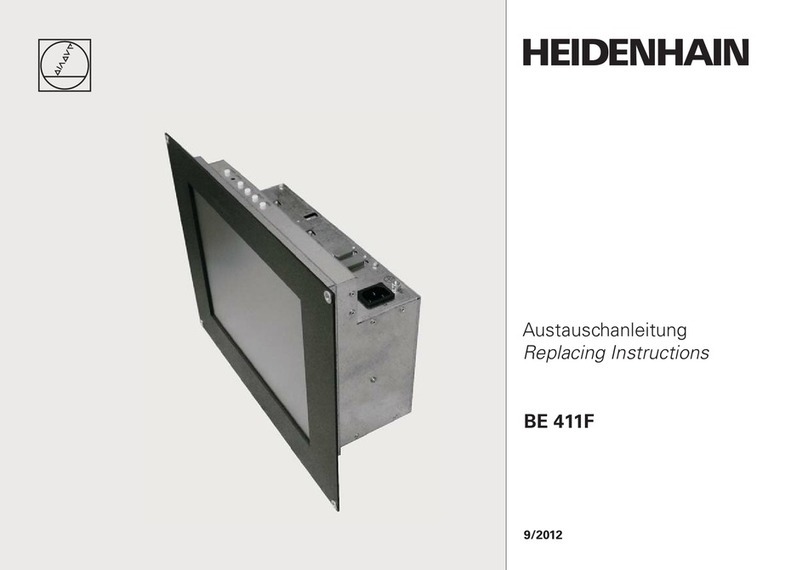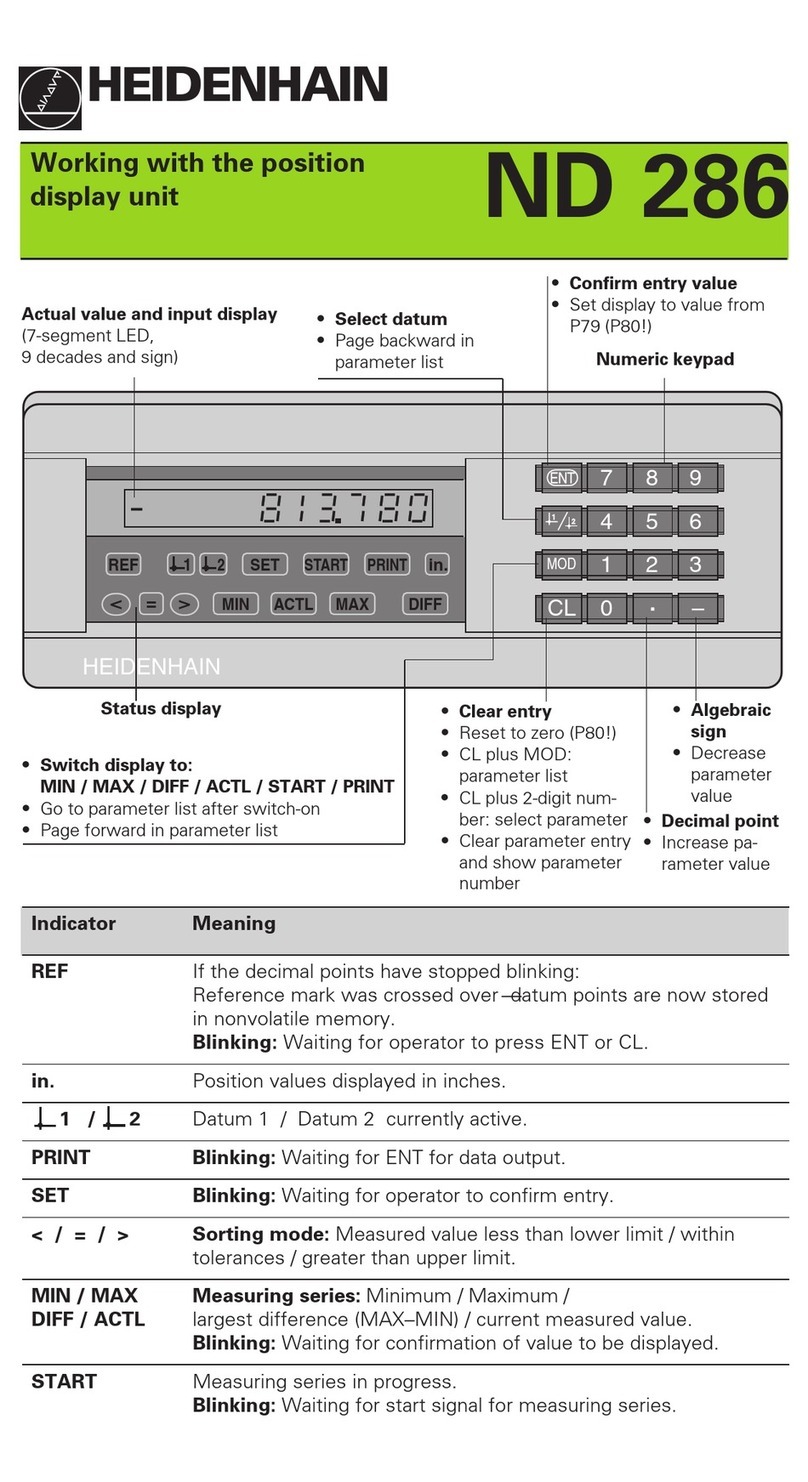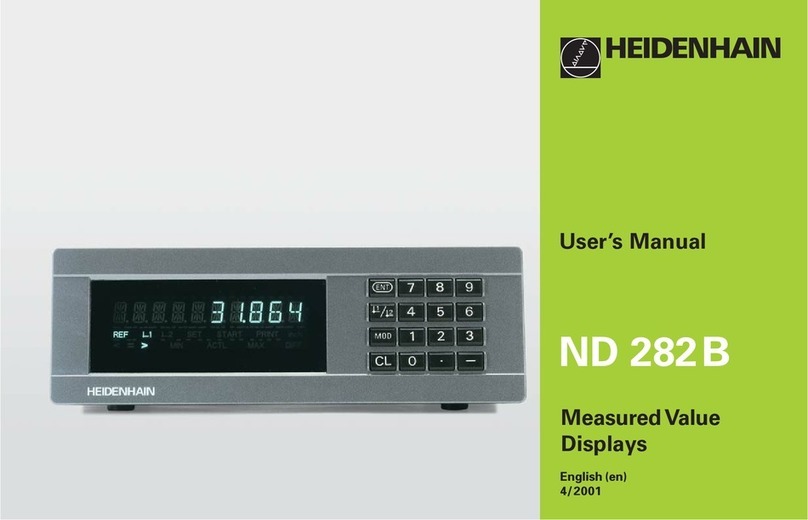
3
Key Function
• Set datum
• Transfer input value
• Set display to value from P79 (P80!)
• Leave parameter list
• Select datum
• Page backwards in parameter list
• Select parameter after switch-on
• Page forward in parameter list
• Start series of measurements 1)
• Switch display for measurement series 1)
• Start measured value output “PRINT”
• Delete entry
• Set display to zero (P80!)
• CL plus MOD: select parameter list
• CL plus number: select parameter
• Delete parameter input and show
parameter number
• Algebraic sign
• Reduce parameter value
• Decimal point
• Increase parameter value
MOD
1) Only in linear measurement mode.
Indicator Meaning
REF If the decimal point is also blinking:
Display is waiting for reference mark
traversing. If decimal point is not blinking:
Reference mark has been traversed—display
stores datum points in nonvolatile memory
Blinking: display is waiting for ENT or
CL to be depressed
inch Position values in inches
1 / 2 Selected datum point
PRINT "Linear measurement”
Blinking: Display is waiting for ENT to
be pressed for data output
“Angular measurement”
Measured value output with MOD key
SET Blinking: Display is waiting for input values
< / = / > Sorting and tolerance checking:
measured value smaller than lower limit /
within the limits / greater than upper limit
MIN
/
MAX / Series of measurements: Minimum /
maximum / greatest difference (MAX–MIN) /
current measured value
Blinking: Confirm selection or deselect
function
START 1) Series of measurements is running
Blinking: Display is waiting for signal to
start series of measurements
DIFF / ACTL1)

